Scotland is the perfect region to visit if you love nature and camping! In this post, we’ll provide you with all the information you’ll need for preparing your camper road trip to Scotland. We’ll give you our best advice and tips based on our own experience. So buckle up and prepare yourself for the road trip of a lifetime!
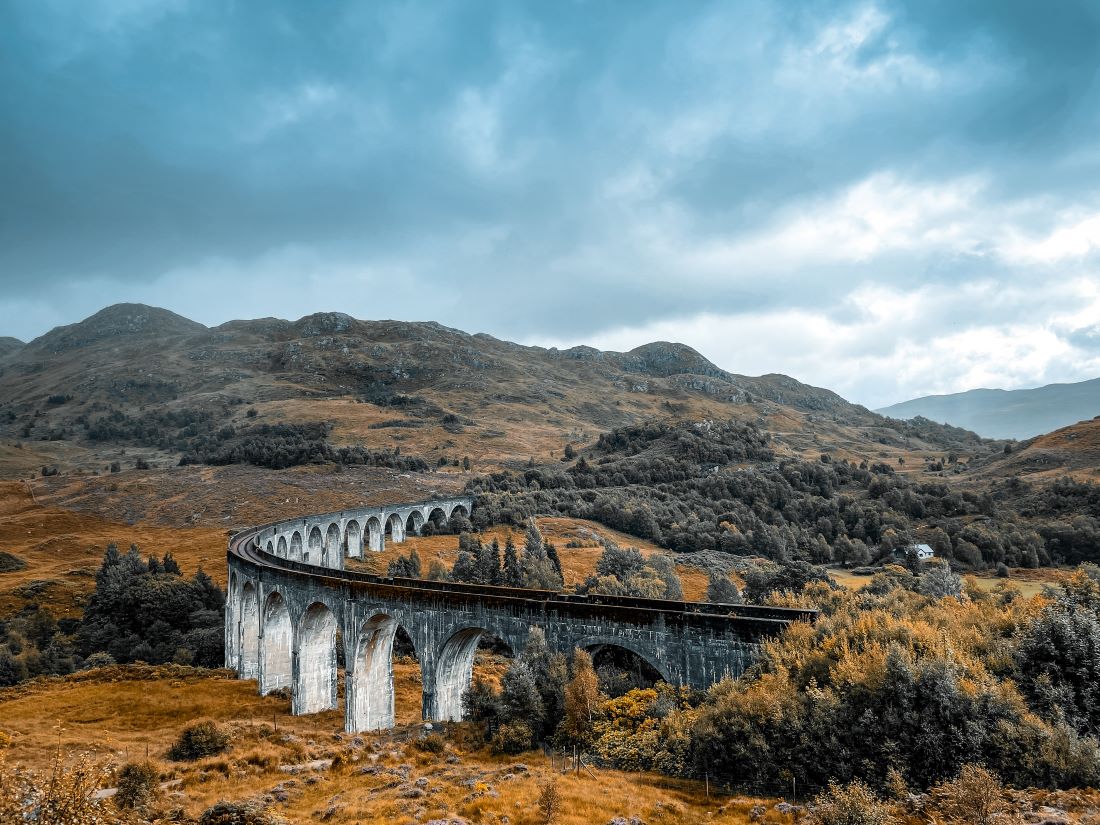
Some of the links on this blog are affiliate links. This means if you click on a link and purchase, we receive a small commission at no additional cost to you. The affiliate links concern only products and services we appreciated highly and trust. This means the views and opinions expressed in this post are purely our own. For more information, read our privacy and cookie policy.
Table of Contents
Overnight camping in Scotland
Off-grid camping
Scotland is one of the few countries in Europe where off-grid camping is very common. In a lot of online articles however, there is a discussion going on about whether camping in Scotland is legal. It seems that wild camping is allowed for travelers with a tent, but the law seems not applicable for motorized vehicles.
Nevertheless, off-grid camping seems to be tolerated and during our two weeks in Scotland, we never had any problems when we parked our car somewhere along the way. It remains to be seen how long this will continue, as we encountered many places where a sign clearly indicated that camping was forbidden. If you decide to camp off-grid, keep the following things in mind:
- Don’t block an entrance or a road with your campervan.
- Don’t damage nature by parking in the middle of it. If there is a car park nearby, use it.
- If you park away from the public road, you need the landowner’s permission to stay there.
- An overnight stay is different from camping. Don’t put a lot of chairs outside and make camp for several days.
Of course, when wild camping, it is important to practice the Leave No Trace principles.
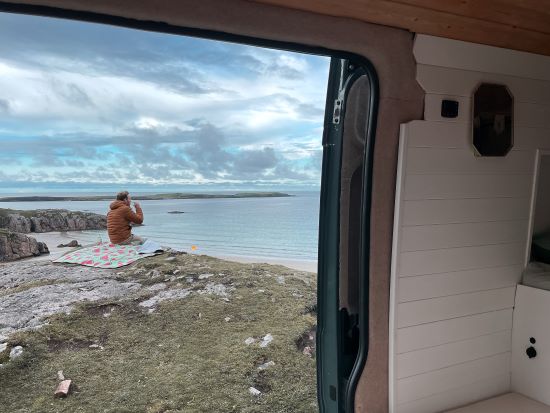
Campsites in Scotland
There are plenty of campsites in Scotland to choose from. Prices for two persons and a motorhome vary between €25 and €50 depending on the location and the services you’ll need. There are plenty of websites with an overview of the campsites in Scotland and up-to-date prices. Campsites.co.uk is the best in our opinion. It provides a complete and detailed overview of all the camping spots available .
Finding a perfect camping spot
Finding the perfect camping spot for the night in Scotland is the easiest thing to do as there are plenty of beautiful places along the roads to park up your campervan. If you need some help, we suggest you download the app Park4Night for campsites, free camping spots and reviews.

In need of a shower or warm bed?
Camping can be exhausting after a while. We like to treat ourselves with a nice warm bed and a hot shower at a cozy hotel or hostel in between camp spots.
Look for accommodation in Scotland, availability and prices HERE
How to get to Scotland with your own campervan?
Scotland is part of the United Kingdom, which happens to be an island. So to get to the UK from mainland Europe, you’ll have to cross the Channel. Below you can find the different options to cross the Channel with your motorhome.
1 Taking the ferry from Calais/Dunkerque to Dover
A first option is to drive to Calais or Dunkerque and take the ferry to Dover. There are several companies to choose from. This crossing will take about one hour and a half. Prices vary depending on the day, the hour and the height and length of your car but expect to pay around € 200 – € 250 for a standard motorhome (inbound and outbound).
On board, you’ll need to leave your car. On the boat there are meal services, a duty-free shop and the possibility to go on the outside deck. This option is our favorite option, especially because you get to see the impressive white cliffs of Dover upon arrival. From Dover, it is still an 8 hour drive up to Edinburgh in Scotland. If you have the time, we highly recommend visiting Stonehenge on your way to Scotland!
![]() Check prices and book your ferry
Check prices and book your ferry
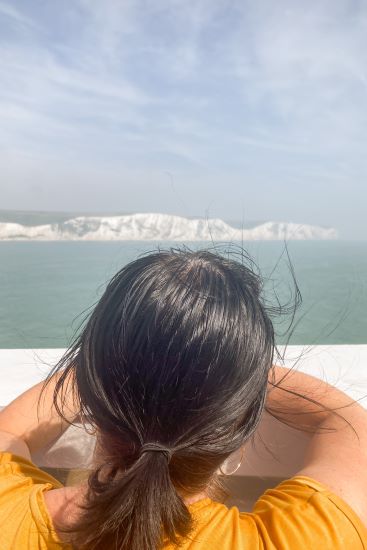
2 Taking the ferry from Rotterdam to Hull
Another option to cross the Channel is by taking the ferry from Rotterdam to Hull. Compared to the first option, you’ll spend more time on board and you’ll need to book a cabin to spend the night. This makes this crossing also more expensive. Expect to pay around € 650 euro for a standard motorhome (inbound and outbound). Once you arrive in Hull, you’re already far more North then when arriving in Dover, making the driving time to Edinburgh less time consuming.
3 Taking Le Shuttle from Calais to Folkestone
A third option is to take Le Shuttle (car on train) from Calais to Folkestone. Here you’ll need to stay in your car the entire time. The crossing via the Chunnel will take about 1 hour and 15 minutes. Expect to pay between € 300 – € 350 for a standard motorhome (inbound and outbound). You arrive in Folkestone so you’ll need another 8 hours to drive all the way up to Edinburgh.
Border control
Make sure to foresee plenty of time for border controls before you get on the train or the ferry. As the UK no longer makes part of the EU, border controls are more intense. At peak season, expect to have a waiting line of two hours at the border.
What is the best time to visit?
If you look at a map, you will see that Scotland is located in the North of Europe. It is known as a destination with very changeable weather. So in any season you’ll probably get some rain at some point. But don’t worry, in our opinion, the landscapes in Scotland are even more magnificent during rainy or foggy weather. Don’t forget to buy a good jacket so you can embrace the rain!

Autumn and winter in Scotland
Scotland in autumn and winter is a good idea. You’ll get to discover a different side of Scotland and the beautiful landscapes are there the entire year. During autumn you’ll get to experience the beautiful landscapes in autumn colors. Next to that, in autumn and winter, there will be fewer people and prices for accommodation will be lower. Some snow roads will be closed in winter and you’ll have to dress warm, but winter in Scotland is for sure stunning!
Spring and summer in Scotland
Scotland’s high season generally runs from April to October, in line with the warmest weather and the longest days. Don’t expect extremely hot days as Scotland remains known for its changeable weather. Nevertheless, this season is perfect if you enjoy hiking. Keep in mind that from June to September, there are some tiny cruel creatures living in Scotland as well: midges!
Driving in Scotland
The main roads in Scotland are well-maintained. On certain stretches however, road conditions are less excellent, but most of the time this is clearly indicated by a sign. On those roads it is important to keep your eyes on the road as there are sometimes steep bumps that are hard on your tires.
Scotland is also known as a region with many single road tracks. These are roads that are just wide enough for only one car. If you encounter a car from the opposite direction, you’ll need to get to a passing lane so the other car can pass you. Driving safely on these roads demands some experience with your campervan. In more touristy areas you’ll see that there are steep bumps alongside the road from cars passing. Often these tracks are very muddy, so make sure you don’t get stuck.
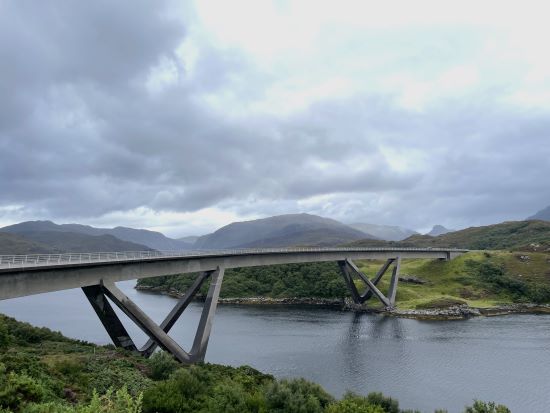
What documents do you need?
If you have a driving license that is issued in a EU/EEA country, you can use it in Scotland for as long as it is valid.
The most important driving rules of Scotland
- Drive left – In the UK (and Scotland), cars drive on the left side of the road. Keep in mind that when crossing a road, you first have to look right and then left.
- Scottish road signs – Most of the roads signs in Scotland are self-explanatory. On the UK Department of Transport’s website you can find all the traffic signs in Scotland.
- Use passing places – As we mentioned before, there are plenty of single-track roads in Scotland. On these roads there are plenty of passing places so make use of these. Also note that you should never park in a passing place to prevent traffic issues.
- Always wear safety belts!
- The use of cell phones when driving is illegal – So pull over to make any calls.
- Drinking and driving laws are strict, and the legal blood alcohol limit is 50 mg in 100 ml of blood. In general, it’s best not to drink when planning to drive.

Campervan services in Scotland
As we mentioned before, Scotland is an excellent country for traveling with your campervan or motorhome.
Service points to empty gray water and toilet cassettes can be found on Park4Night. As there are plenty of service points, there is no reason at all to pollute nature, so again, please practice the Leave No Trace principles!
Best scenic drives in Scotland
From Edinburgh to Glencoe
This drive will take about 2 hours and 50 minutes. Driving through the glen of Glencoe is stunning, with majestic mountains accompanying you along the way. When heading from Edinburgh to Glencoe, make sure to make a stop at The Kelpies (the famous horse sculptures) and the Stirling Castle.
The North Coast 500
The NC500 is a 805 kilometer drive in the upper north of Scotland that takes you along the most beautiful landscapes Scotland has to offer. Keep in mind this is a week long road trip and recommend taking your time to be able to enjoy all the beauty along the way.

Driving on Isle of Skye
Isle of Skye is probably one of the most beautiful isles of Scotland. Take your time to drive around the island and discover stunning places like Old man of Storr, the Quiraing and Rhuba Hunish.
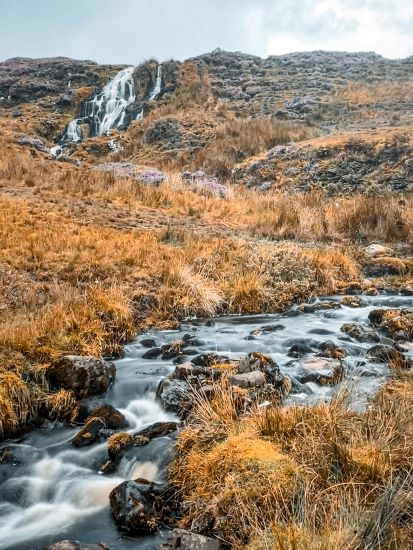

What to take with you when traveling to Scotland with your campervan?
- A travel book, like Lonely Planet Scotland. A travel book is not only needed to plan ahead, it is also excellent to discover new places along the way. A Lonely Planet Scotland is definitely a must-have when traveling with a campervan in Scotland.
- Mobile reception is not always evident in Scotland. Therefore, a decent road map of Scotland to help you guide the way is an essential item for your road trip through Scotland.
- Scotland has some adventurous and stunning hikes to offer. So make sure you bring hiking gear with you. As a daypack we stick to our Vaude and Deuter backpack. We have these for ages and they are still looking brand new. Inside our daypack we have our Camelbaks to make sure we stay hydrated. For shorter hikes, we take a refillable water bottle with us. Sturdy hiking shoes are also an essential item to take with you when traveling in Scotland.
- When you visit Scotland, make sure to take some Smidge with you, to prevent you from being eaten by awful midges. We found Smidge to be very effective. Most supermarkets in Scotland sell this. If you get easily annoyed by mosquitos and midges, we recommend a midge proof headnet as well.
- If you are into videography or photography the landscapes of Scotland are the perfect place to make some drone footage. See the world from a bird perspective and take a drone with you. We are very pleased with our DJI Mini drones.
- It is known that it rains often in Scotland. To make sure you’re not doomed to stay the entire day inside, we highly recommend to take qualitative rain clothes with you. As a saying goes, there is no bad weather, there is only bad clothing!
What are the most popular activities to do when visiting Scotland?
You simply can’t leave Scotland without sampling a taste of their rich history and culture. These are the top 3 activities that you only can do in Scotland:
Whisky tasting tour
Scotland has a long history of excellent whiskey production. Therefor, taking a whisky tour in Scotland can be an unforgetable experience. The island is dotted with beautiful distilleries that allow you to immerse yourself in the traditions, craftsmanship, and cultural significance of Scotch whisky.
Many famous distilleries like Ardberg in Islay and Oban in Argyl are so charming that it’s hard to choose.
Most of them are located in a very scenic environment which adds to the overall experience. We took an expert guided tour at Talisker and the guides were very knowledgeable. We highly recommend taking a guided whisky tour as Scotland is the only place in the world that embodies so much history and cultural heritage into their whisky tours.
In summary, a whisky tour in Scotland is not just about sampling a variety of excellent whiskies; it’s a holistic experience that encompasses history, culture, landscapes, and craftsmanship, making it a must-do for any visitor to Scoland.
Book your whisky tour here
Taking a Loch ness river cruise
There’s still something magical about the Loch ness river monster. The myth has recently been rehyped by a group search event in order to find “Nessie”. The “Loch ness” is a picturesque place and is best experienced by taking a river cruise.
Book your Loch ness river cruise here
Puffin spotting at Orkney Island
Did you know that you don’t have to fly to Iceland to see the most adorable puffins? By taking a boat at John O’Groats you can visit the most northern points of Scotland and witness puffins nesting right before your eyes. An experience we won’t forget very soon!
Book your Orkney Island tour here
We hope this blog post provides you all the information you need on traveling with a campervan in Scotland. If you have any questions or recommendations do drop us a message!
Happy travels!
Matthias and Mieke
Quick start your holiday with the help of our trusted tools
These are the websites we highly recommend to plan your next trip. We use them all the time to save money and travel freely! Did you know that by purchasing through our links, you support us at no additional cost. Thank you for your support. ♥️
Find hotels: via booking.com
Find a rental car: via discovercars.com
Find cheap flights: via skyscanner.com
Book tours & attractions: via getyourguide.com
Book a bus / train / transfer: via omio.com—
